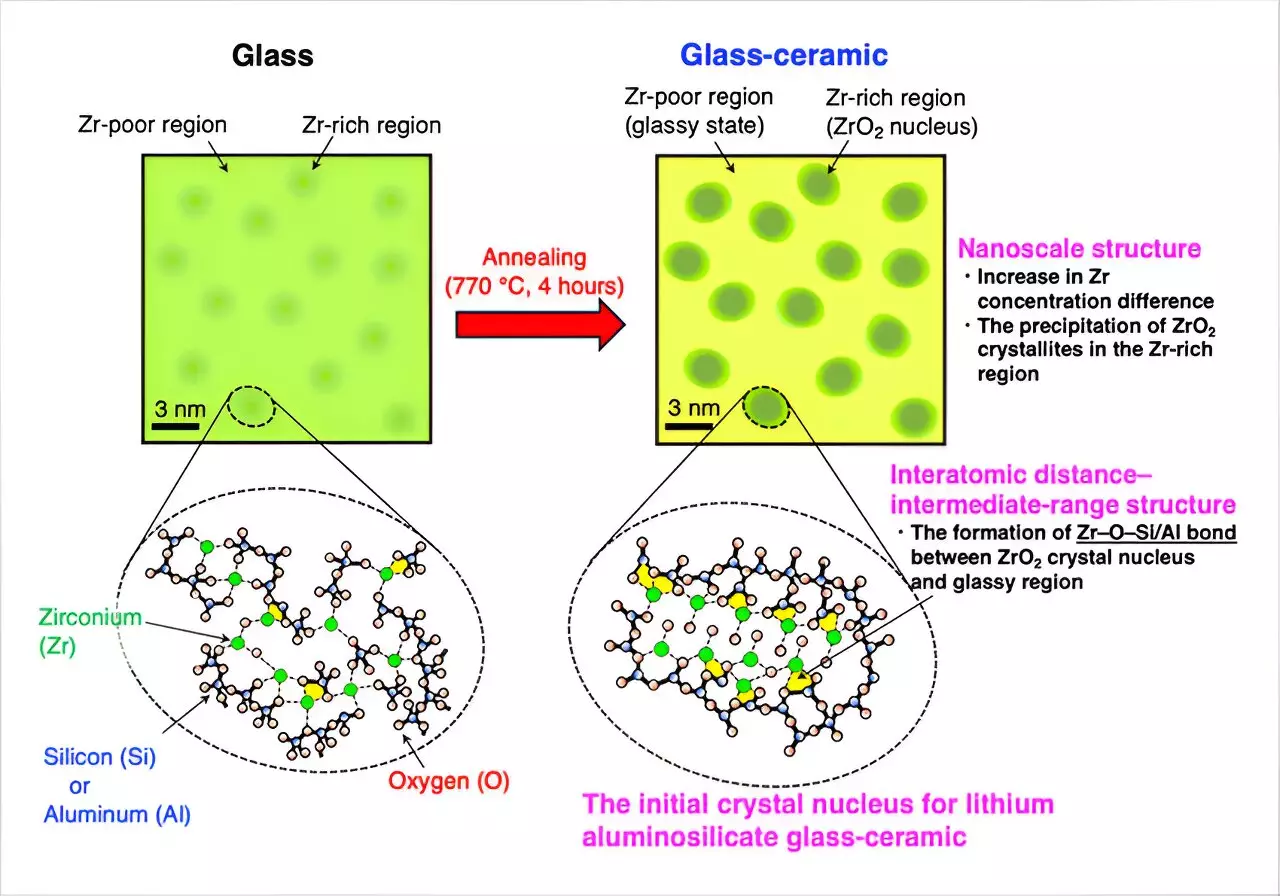The ongoing evolution of materials science has recently been exemplified by a novel study conducted by a collaborative research team from the National Institute for Materials Science (NIMS), AGC Inc., and the Japan Synchrotron Radiation Research Institute (JASRI). This research meticulously examined the initial stages of glass transforming into a glass-ceramic—a hybrid material known for its enhanced strength and heat resistance. The significance of this work lies not just in the transformation process itself, but in the understanding it provides regarding crystal nucleation, a critical endpoint in achieving desirable material properties.
This study, published in *NPG Asia Materials*, delves into the complex interplay of physical and chemical processes governing crystallization. The research team employed advanced multiscale structural analysis techniques—primarily synchrotron X-ray investigations—to unveil the intricate mechanisms at work. Such methodologies not only allow for detailed observations at varying spatial dimensions—from the atomic to the nanometer scale—but also help to establish a coherent model explaining these nucleation processes without discrepancies.
The Importance of Pristine Glass Composition
Central to the formation of glass-ceramics is the synthesis of a pristine glass composition deliberately engineered to promote partial crystallization upon heat treatment. Previous research had hinted at the necessity of crystal nuclei formation—tiny seeds from which crystal particles develop. However, the nuances of these processes remained largely speculative until now. The team’s innovative approach utilizing zirconium oxide (ZrO2)-doped lithium aluminosilicate glasses—a staple in the glass industry—provides a tangible pathway for scientists and engineers alike.
Their findings describe how heat treatment amplifies the concentration variances of zirconium within the glass matrix, leading to the emergence of nanosized crystal nuclei specifically within Zr-rich regions. This crucial insight reveals that the spatial distribution of components is not merely circumstantial but rather foundational to the material properties of the resulting glass-ceramics.
Revolutionary Insights from Structural Measurements
What sets this study apart is the identification of Zr–O–Si/Al bonds surrounding the ZrO2 crystal nuclei, revealing the underlying atomic structures that facilitate crystal growth. This revelation represents a significant advancement in understanding how these bonds contribute to the overall effectiveness of the glass-ceramic transformation. The implications extend beyond glass-ceramics to a wider array of materials, as the techniques utilized could be employed to examine other complex and disordered materials.
The authors emphasize the broad applicability of their multiscale structural analysis, suggesting that it could unlock novel characteristics in various materials, paving the way for innovative applications. The potential to synthesize new functional materials, endowed with properties tailored for specific uses, positions this research at the forefront of material advancement.
Indeed, the collaboration among renowned institutions and the innovative use of synchrotron X-ray technology signify a major stride. This quality of research not only enhances our understanding of glass and glass-ceramics but also has practical implications that can reshape industries reliant on advanced material properties. As research continues in this vein, the prospects for engineered materials seem ever more promising.

